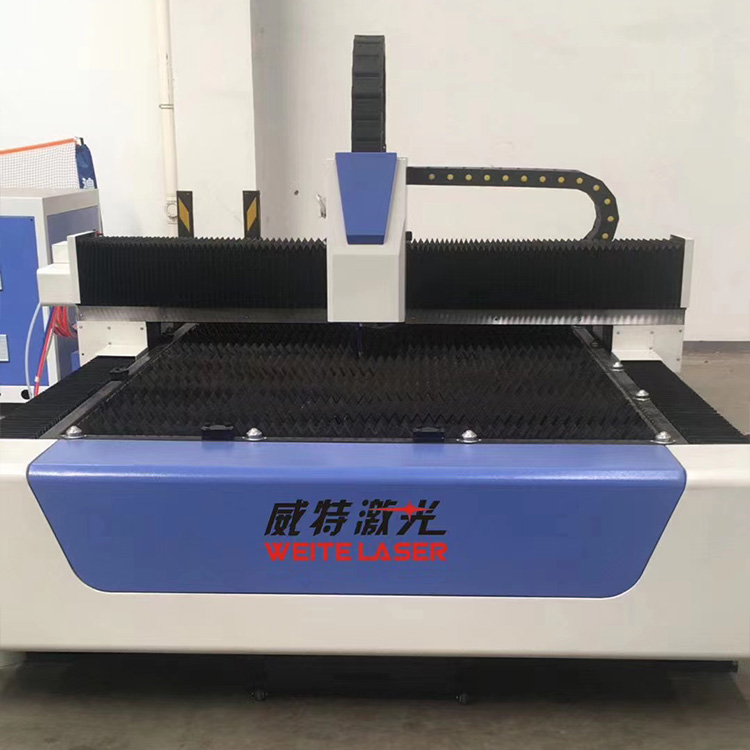- Español
- Português
- русский
- Français
- 日本語
- Deutsch
- tiếng Việt
- Italiano
- Nederlands
- ภาษาไทย
- Polski
- 한국어
- Svenska
- magyar
- Malay
- বাংলা ভাষার
- Dansk
- Suomi
- हिन्दी
- Pilipino
- Türkçe
- Gaeilge
- العربية
- Indonesia
- Norsk
- تمل
- český
- ελληνικά
- український
- Javanese
- فارسی
- தமிழ்
- తెలుగు
- नेपाली
- Burmese
- български
- ລາວ
- Latine
- Қазақша
- Euskal
- Azərbaycan
- Slovenský jazyk
- Македонски
- Lietuvos
- Eesti Keel
- Română
- Slovenski
- मराठी
- Srpski језик
Criteria for Judging the Cutting Quality of Laser Cutting Machines
2022-01-22
Criteria for judging the cutting quality of laser cutting machines
1. Roughness: The laser cutting part will form vertical lines, and the depth of the lines determines the roughness of the cutting surface. The lighter the line, the smoother the cut. Roughness affects not only the appearance of the edge, but also the friction properties. In most cases, it is necessary to minimize roughness, so the shallower the grain, the better the cut quality.
2. Verticality: If the thickness of the sheet metal exceeds 10mm, the verticality of the cutting edge is very important. As you move away from the focal point, the laser beam becomes diverging and the incision widens towards the top or bottom depending on the position of the focal point. The cut edge deviates from the vertical by a few hundredths of a millimeter, and the more vertical the edge, the higher the quality of the cut.
3. Cutting width: Generally speaking, the cutting width will not affect the cutting quality. The width of the cut only matters when creating a particularly precise contour inside the part. This is because the width of the cut determines the minimum internal warpage of the profile. When the thickness of the sheet increases, the cutting width increases accordingly. Therefore, in order to ensure the same high precision, the processing area of the laser cutting machine should remain constant regardless of the cutting width.
4. Texture: When cutting thick plates at high speed, the molten metal will not appear in the cut under the vertical laser beam, but will be ejected at the back of the laser beam. As a result, a curve is formed on the cutting edge, and the curve closely follows the moving laser beam. To correct this problem, reducing the feed rate at the end of the cutting process can greatly eliminate the formation of lines.
5. Burrs: When forming burrs, it is a very important factor to determine the cutting quality of the laser cutting machine. Because the removal of burrs requires extra workload, the severity and amount of burrs can intuitively judge the quality of the laser cutting machine.
6. Material deposition: Before the laser cutting machine starts to melt the perforation, a layer of oil-containing special liquid is first encountered on the surface of the workpiece. During the cutting process, due to gasification and various materials are not used, the customer uses wind to remove the incision, but upwards Or downward discharge can also form deposits on the surface.
7. Indentation and corrosion: Indentation and corrosion can adversely affect the surface of the cutting edge and affect appearance. They appear in cutting errors that should generally be avoided.
8. Heat-affected zone: In laser cutting, the area near the cut is heated. At the same time, the structure of the metal changes.
9. Deformation: If the laser cutting machine sharply cuts and heats the part, it will deform; this is especially important for fine machining, where the contours and connections are usually only a few tenths of a millimeter in width; control the laser power and use short Laser pulses reduce part heating and avoid deformation.

1. Roughness: The laser cutting part will form vertical lines, and the depth of the lines determines the roughness of the cutting surface. The lighter the line, the smoother the cut. Roughness affects not only the appearance of the edge, but also the friction properties. In most cases, it is necessary to minimize roughness, so the shallower the grain, the better the cut quality.
2. Verticality: If the thickness of the sheet metal exceeds 10mm, the verticality of the cutting edge is very important. As you move away from the focal point, the laser beam becomes diverging and the incision widens towards the top or bottom depending on the position of the focal point. The cut edge deviates from the vertical by a few hundredths of a millimeter, and the more vertical the edge, the higher the quality of the cut.
3. Cutting width: Generally speaking, the cutting width will not affect the cutting quality. The width of the cut only matters when creating a particularly precise contour inside the part. This is because the width of the cut determines the minimum internal warpage of the profile. When the thickness of the sheet increases, the cutting width increases accordingly. Therefore, in order to ensure the same high precision, the processing area of the laser cutting machine should remain constant regardless of the cutting width.
4. Texture: When cutting thick plates at high speed, the molten metal will not appear in the cut under the vertical laser beam, but will be ejected at the back of the laser beam. As a result, a curve is formed on the cutting edge, and the curve closely follows the moving laser beam. To correct this problem, reducing the feed rate at the end of the cutting process can greatly eliminate the formation of lines.
5. Burrs: When forming burrs, it is a very important factor to determine the cutting quality of the laser cutting machine. Because the removal of burrs requires extra workload, the severity and amount of burrs can intuitively judge the quality of the laser cutting machine.
6. Material deposition: Before the laser cutting machine starts to melt the perforation, a layer of oil-containing special liquid is first encountered on the surface of the workpiece. During the cutting process, due to gasification and various materials are not used, the customer uses wind to remove the incision, but upwards Or downward discharge can also form deposits on the surface.
7. Indentation and corrosion: Indentation and corrosion can adversely affect the surface of the cutting edge and affect appearance. They appear in cutting errors that should generally be avoided.
8. Heat-affected zone: In laser cutting, the area near the cut is heated. At the same time, the structure of the metal changes.
9. Deformation: If the laser cutting machine sharply cuts and heats the part, it will deform; this is especially important for fine machining, where the contours and connections are usually only a few tenths of a millimeter in width; control the laser power and use short Laser pulses reduce part heating and avoid deformation.



